A gateway to history
If you’ve ever wondered about the seemingly random little pillar on the corner of 15th St. and Constitution Ave., Sharon Park explains that it is one of the few remaining reminders of a time when security for the Capitol meant elegant architectural accents rather than concrete bollards and riot fencing.
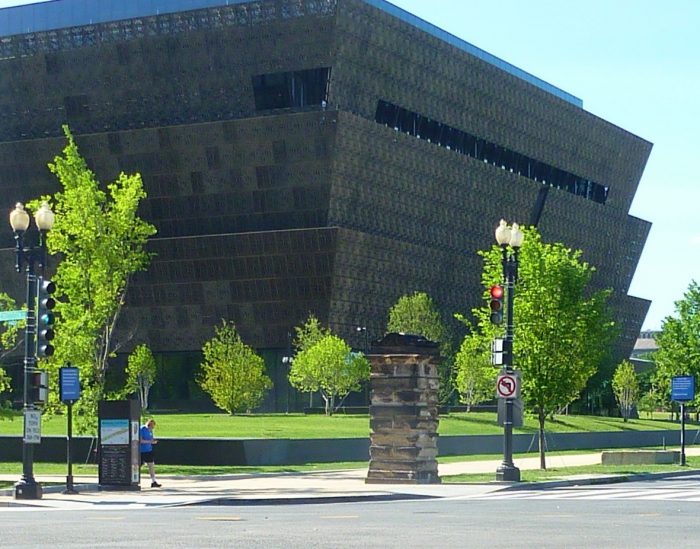
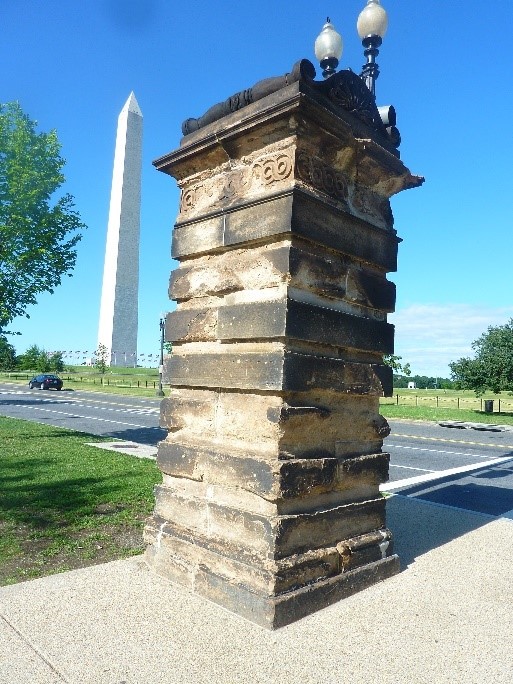
The stone pillar in front of the National Museum for African American History and Culture is a gatepost that was once part of a perimeter fencing system surrounding the U.S. Capitol installed almost 200 years ago between 1826 and 1829.
This historic element, along with others, was relocated around 1880 to Constitution Avenue under the jurisdiction of the National Park Service. When the site selection for NMAAHC was approved in 2007, the Smithsonian inherited this wonderful gatepost.
Today, there are just four gateposts still standing – three along 15th Street and Constitution Ave. and one standing at 7th St. and Constitution. In addition to the gateposts, there are also two gatehouses that were once part of the original U.S. Capitol landscape that have been relocated to the Ellipse. We know there are more gateposts, but over the years many have been lost or relocated. Recent research by the Smithsonian’s Office of Architectural History and Historic Preservation solved some of the mystery of how they came to be relocated and why there are so few remaining.
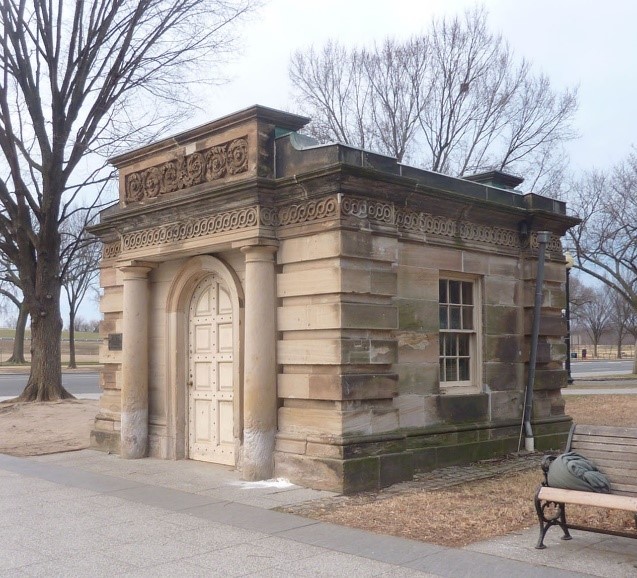
Records show that there were originally 24 gateposts, two gatehouses, and iron fencing and gates around the U.S. Capitol. They were all designed by Charles Bulfinch, third Architect of the Capitol, between 1818 and 1829. Their classical design was based on details on the Capitol building itself. This includes the floral details on the parapets of the gatehouses; the rusticated stonework, the entwined circular banding called a guilloche on both features, and the acanthus leaf detailing under the bonnet-topped scrollwork at the top of the gateposts.
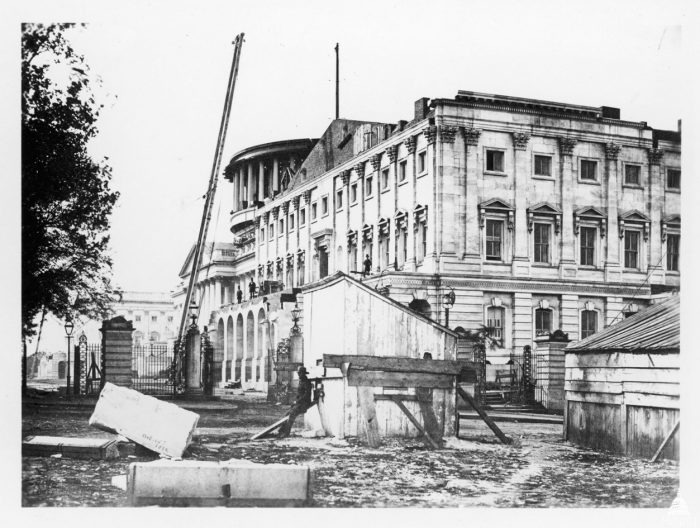
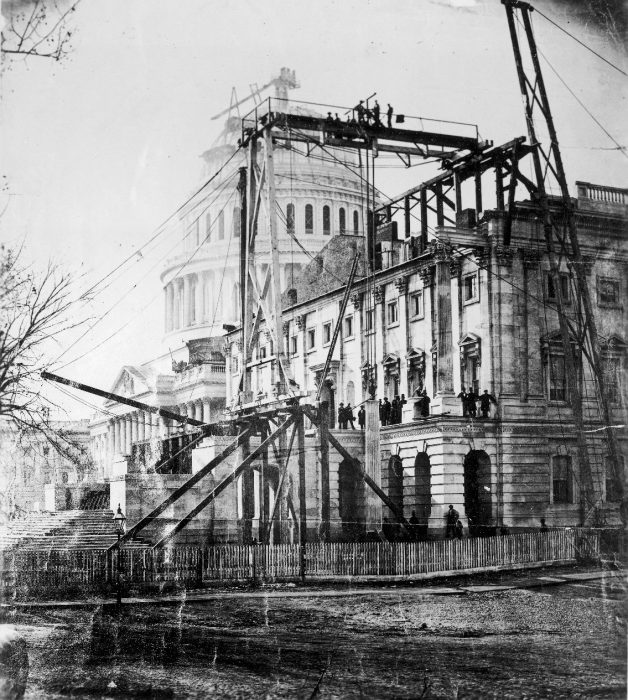
The two relocated gatehouses stand on the Ellipse at 15th and 17th streets. along Constitution Ave. But the fate of the other gateposts was unclear until recently. The research began in order to update the National Register of Historic Places’ nomination for the Bulfinch features. When the Bulfinch features were originally nominated to the National Register by the National Park Service in 1973, there was no discussion of the context of the original number, configuration, or location of the gateposts. There was also no discussion of where exactly the gateposts were repositioned along Constitution Avenue or when they were subsequently demolished.
So why were the gateposts moved in the first place and why are so few remaining? As with many properties that change over time, the U.S. Capitol went through an expansion in the late 1850s designed architect Thomas U. Walter, and some of the gateposts were in the way. The eight gateposts located at the carriage entryways on the east side of the Capitol were removed in 1860. We do not know where they wound up, possibly in the landfill. To complement the expanded U.S. Capitol, the grounds were modified in 1874 with a design by landscape architect Frederick Law Olmsted that required the removal of the remaining 16 gateposts, the two gatehouses, and assorted iron fencing. Luckily, AHHP’s recent research found all 16 of the gateposts and the fencing that were relocated to Constitution Ave. from 6th to 17th streets, along with the two gatehouses moved to the White House Ellipse.
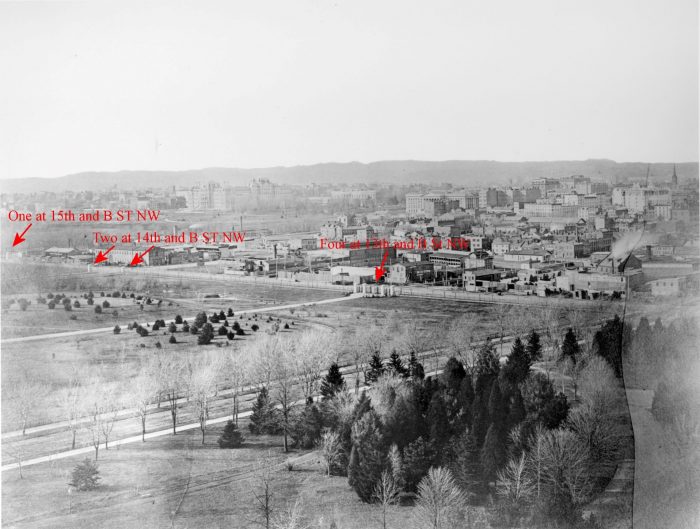
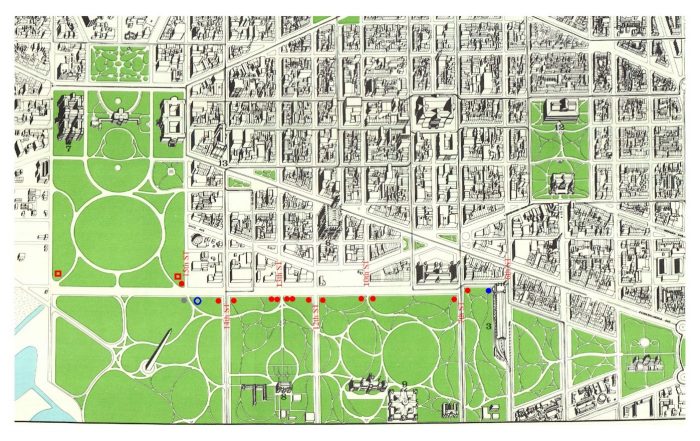
The key to finding the gateposts was delving into archived documents and old photographs, particularly two great panoramic views from the 1880s, each made up of several glass plate negatives. In 1873, the Grant administration, recognizing that the the Bulfinch features needed to be moved from the U.S. Capitol grounds, requested they be moved to enhance the area north of the National Mall, which was then undergoing a transformation.
Constitution Ave. now runs along the route of the old Washington City Canal. Since 1815, the canal had been used for transportation and to bring building materials into the city, including the the red sandstone from Seneca Quarry in Maryland that was used to build the Smithsonian Castle from 1849 to 1855. But transportation technology was changing and the canal had outlived its usefulness. The water was diverted into a culvert and was covered over in 1871 -1873 with a new street – at the time named B Street North. However, even removing the defunct and smelly canal did little to improve the character of the area, with its smoky train station, industrial warehouses, power plant, and the Central Market, with its many farm delivery wagons and horses who contributed their own special messes. In 1923, B Street was renamed Constitution Avenue. The use of the relocated gateposts and railings made a sophisticated perimeter for the north boundary of the serene, picturesque mall separating it from the busy, chaotic street. When enlarging the panorama photos, a great deal of detail about this area and all 16 gateposts can be accounted for.
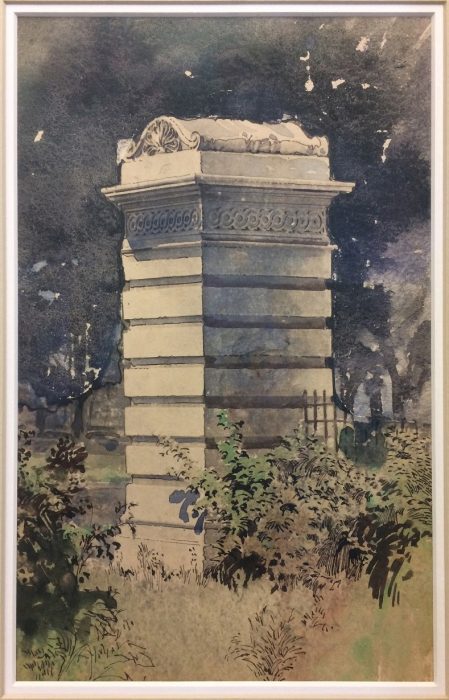
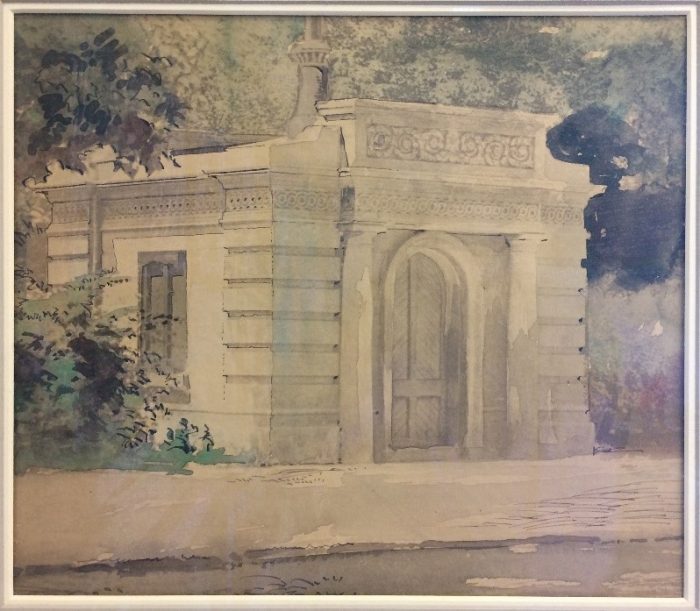
What is surprising about the images is that no one paid much attention to the Bulfinch features, partly because of the small size of the images comprising the panoramas. When the images were blown up, we can see the features in place along the Mall. Not much was written about the Bullfinch features until 1938 when the new Historic American Building Survey program of the National Park Service set out to record these distinctive architectural features. The records reside in the Library of Congress and are focused on the remaining features – two gatehouses and three gateposts near the White House. The lone remaining 7th Street gatepost was not recorded until later, even though it was perfectly visible in 1938.
AHHP scoured additional photographs from between the 1900s and 1938 to see when the 12 lost gateposts were documented. As the area improved under the 1902 McMillan Plan to beautify the city, the narrow streets and carriageways were converted to wider paved areas and the National Mall took on its current appearance of formal lawn panels, 4 rows of elm trees, and rectilinear roads. The gateposts, however, were again in the way and subsequently removed.
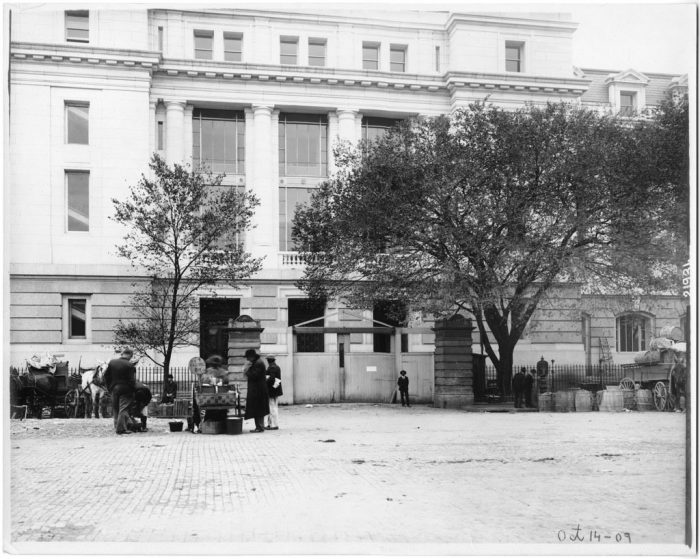
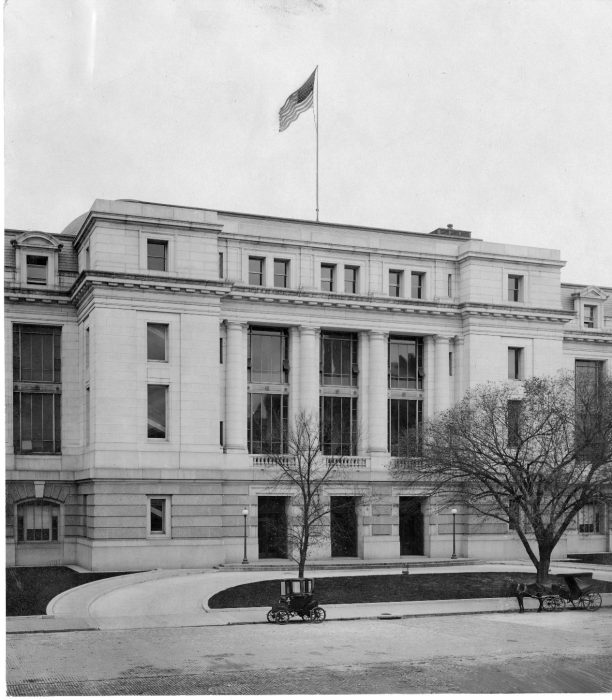
Of particular interest to the Smithsonian is that there was a pair of gateposts at 10th Street and Constitution Ave. that once flanked a carriage road to the picturesque Smithsonian Pleasure Garden. But the construction of the new National Museum, now the National Museum of Natural History, caused their destruction. We can see images of them in place in 1909, but they are gone by 1911 as a new circular drive was constructed. The fate of 12 now-missing gateposts was similar. Most were documented to have been removed between about 1910 and the early 1930s. The National Park Service stored stones from the demolished gateposts at their outdoor facility at Fort Totten in Northeast Washington, D.C.
The National Register nomination for the Bulfinch Gatehouses and Gateposts has been updated by the Smithsonian and a condition survey of the Smithsonian’s one Bulfinch feature has given guidance to future conservation of the Aquia Creek sandstone feature. The AHHP hopes to initiate work in the near future to keep the gatepost in good condition for years to come.
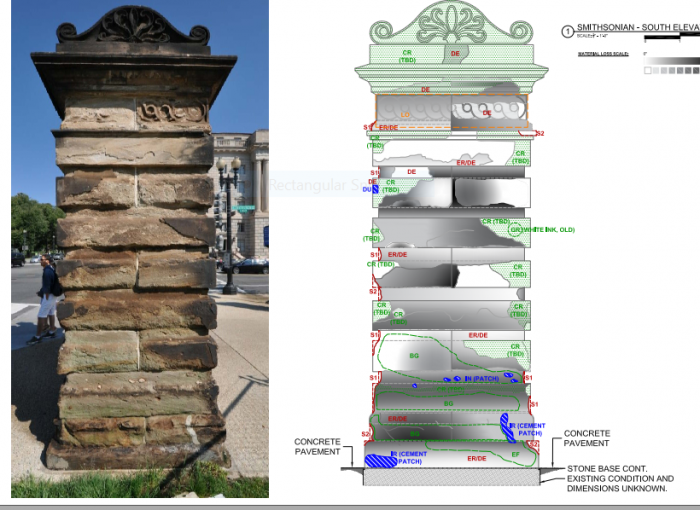
An interesting third life for the gateposts can be seen in the reconstruction of salvaged parts to create four gateposts for the New York Avenue entry to the National Arboretum. This occurred in 1991, using the stones from the Fort Totten facility. While not considered historic by National Register Standards, it is clear, that they still bring a feeling of nostalgia for an earlier era.
We feel proud to have this feature as part of our collection of buildings and landscapes and hope to keep it safe for years to come. AHHP plans to work with the National Park Service to develop informational wayside signage for these interesting features.
Sharon Park is the Associate Director of the Office of Planning, Design and Construction’s division of Architectural and Historic Preservation. This post is an edited version of an article originally published by Smithsonian Access. Reprinted with permission.
Posted: 27 January 2022
-
Categories:
Education, Access & Outreach , Feature Stories , History and Culture







